| Photojournal
- 29 May
2005
Dark
day at Ambleside
| The day after chasing the Lazulis, I had a plan to
meet up with my friend
Anne to go take some photos along the walkway at Ambleside in North
Vancouver. I had just recently helped Anne with her choice of camera
and she had taken a photography workshop and we were going out partly
to help her practice her skills and get acquainted with her new
camera, and partly just to hang out. For those of you not from around
here, or who are not acquainted with Ambleside, it has a fairly
long shoreline walkway, a lot like the New Westminster Quay, but
on the ocean/bay rather than the river. Here's a view from the west
end of the walkway, looking back eastward; the path continues around
the point at the right of the photo. (And that's the Lion's Gate
Bridge back behind there. |
|
 |
|
We didn't start at the west end of the walkway, so that photo
is from later in our
walk, but I wanted to set the stage. I also wanted to show you
just how grey of a day it was; the light wasn't that good for
photography.
We started much closer
to the east end, and I put my new general-purpose lens on my camera,
leaving the long lens in the car. I knew Anne wasn't big on bird
photos anyway, and I would've been tempted to go after bird shots
if I had that lens with me. I figured I would be more available
for photography questions and conversation if I wasn't chasing
birds. Ah, the sacrifices I make.
Since the light wasn't
that good, shutter speeds were long and I ended up with a lot
of blurry shots. Mostly our subjects were flowers and bees. Just
like in this shot.
|
|
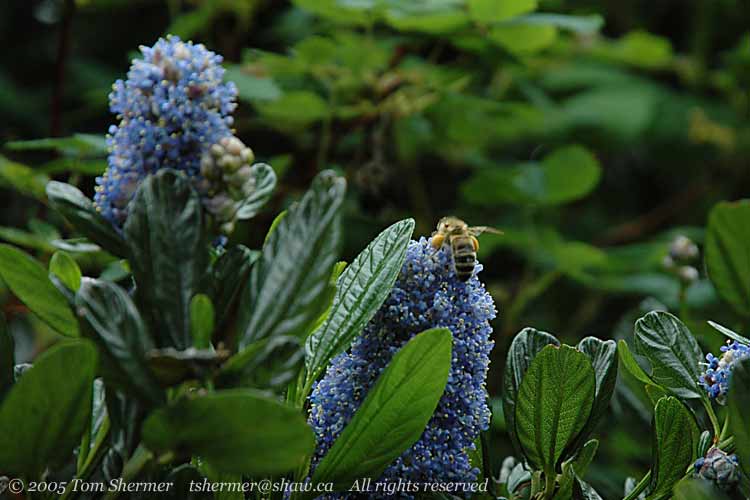 |
|
I don't know what the
bushes with the blue flowers are. I liked the light-colored things
(styles?) coming out of the flowers; they looked metallic.
The previous shot showed
a Honey Bee, and the following is a Bumble Bee.
|
|
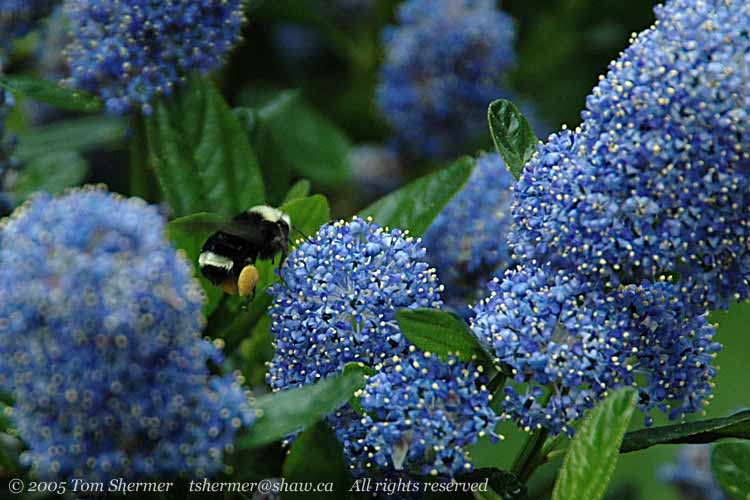 |
|
As we proceeded down
the walkway, Anne fell victim to the insidious trap that all digital
camera owners face: the low-power icon. It's a classic example
of bad interface design. The trap works as follows: when a digital
camera's battery gets low, it turns on a "low power"
indicator. Unfortunately, with most cameras, the low-battery condition
can be detected only right before the end of battery operation.
The low-power indicator therefore turns on when there are only
a few shots' worth of power left in the battery. It's a little
like hitting "E" on your car's fuel guage.
The bad design part
is that most cameras have a low-power indicator that looks like
a little picture of a battery that is half-full. Sometimes quarter-full.
Either way, most people interpret this little picture to mean
that the battery has half (or a quarter) of its power left—they
think that the little picture of a battery is a gauge. But really,
it's an icon that indicates "almost empty". It's quite
misleading.
So my friend Anne had
thought that she had plenty of power left (the icon said "half-full")
and then her camera shut down after a photo or two. I had this
happen to me once when I got my first digital camera, as did one
of my photography buddies, and I'm sure that it's happened to
countless others. The manufacturers should really change that.
Until then, remember this tale if you ever get a digital camera,
and carefully check how your camera displays the battery condition.
Anyhow, that took a
little of the fun out of the walk, but Anne troopered on. We talked
some while I was taking photos of these purple-and-blue Delphiniums.
|
|
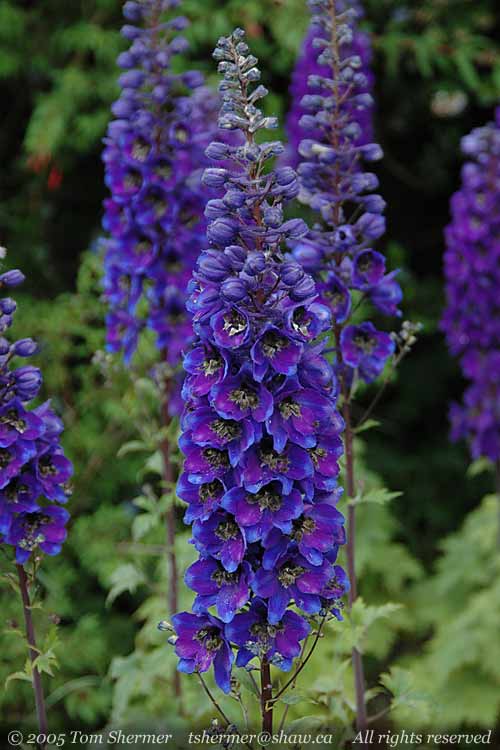 |
| There were
bees visiting the Delphiniums, too, and I got a few photos of them.
There wasn't enough light to get a really sharp photo of them, though. |
|
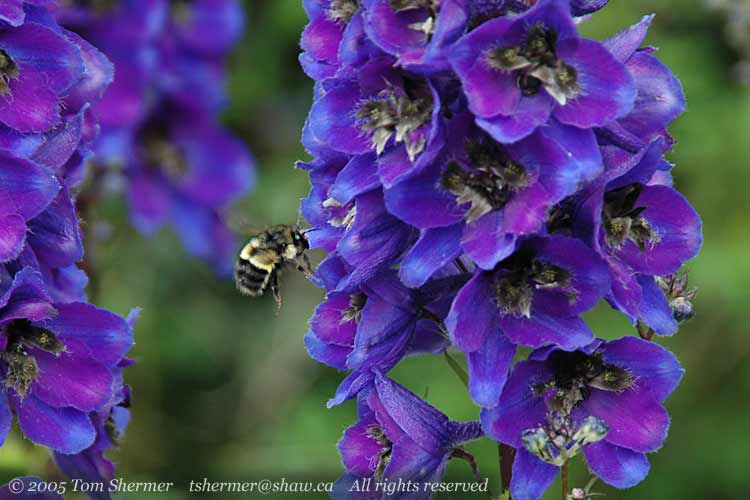 |
|
We came upon a bed
of flowers, which I think were Dahlias. There were several different
colors of them and I spent some time playing with different settings
to see how my lens would perform. It did okay, but it became clear
that despite the Vibration Reduction feature, it would still need
for the camera to be mounted on a tripod to get good low-light
shots.
Here's a white Dahlia.
|
|
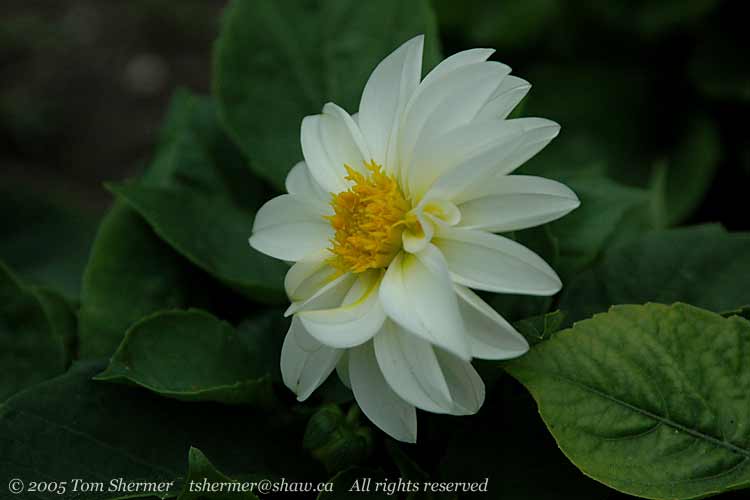 |
| And here's
an orange one, along with some buds. |
|
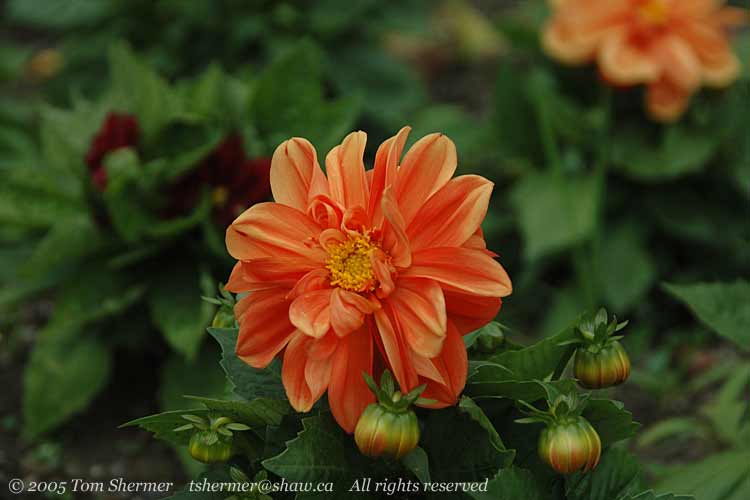 |
| And here's
a pretty red one. |
|
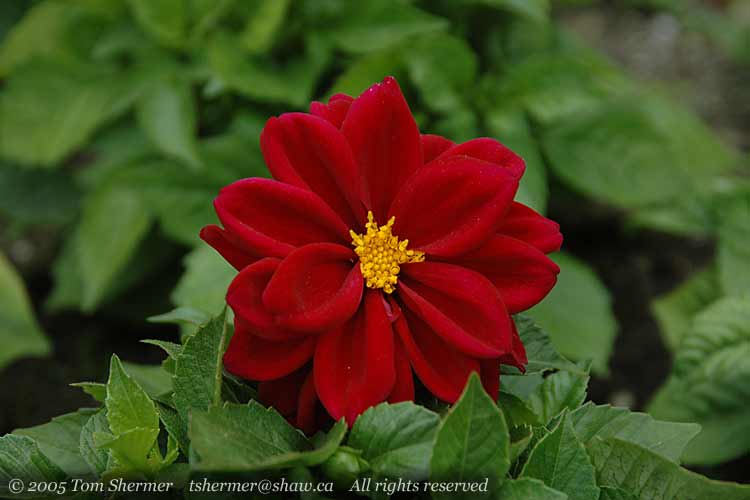 |
| Since Anne's
camera uses the same type of memory card that mine does, I got her
to put her memory card in my camera and let her take a bunch of
photos with it, practicing her exposure and apeture settings, zoom,
composition, etc. We then left the Dahlia beds and I found the following
flower, which looks a bit like a Cornflower (Centauria) of
some sort. I'm not sure if that's what it is, though. |
|
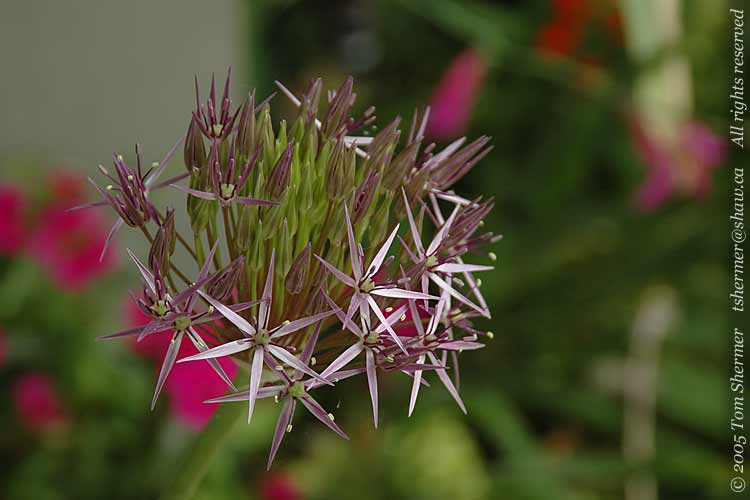 |
| We sat down
on a bench for a while and I noticed that there were a bunch of
large mammals around, probably H. sapiens. Here's a pair
of them; that's an adult male in winter plumage on the left and
a recently-fledged juvenile on the right. It seemed a bit early
in the year for winter plumage, but with this species, anything
is possible. I also can't tell if the adult is making a display
of support to the juvenile or if he's preparing to grab the little
tyke and run away with him. |
|
 |
| A little
later, and a little farther down the walkway, I found this, another
flower which I'm having a hard time identifying. I've spent a lot
of time looking through flower books, but flowers are just really
difficult. |
|
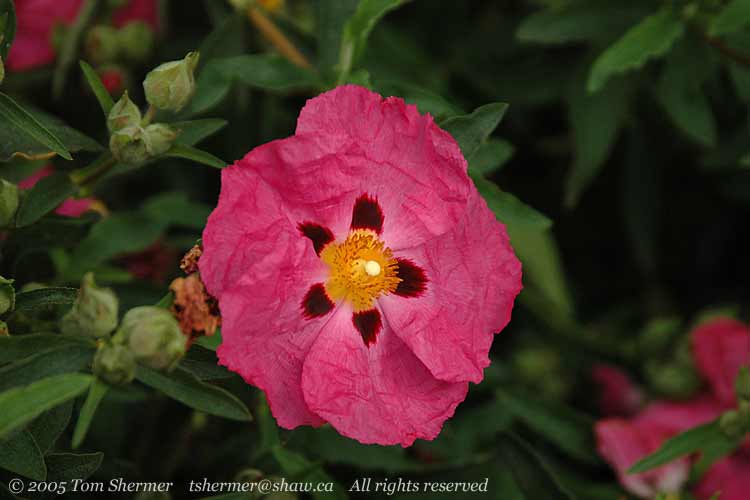 |
| And not
just flowers, but other plants, too. Here's an attractive green
plant that I can't i.d. |
|
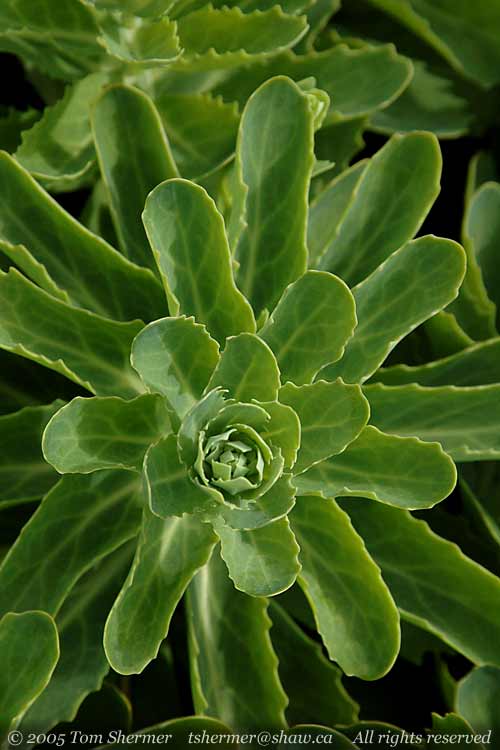 |
| Thankfully,
the other two things that I got shots of were known to me. This
first one is an Iris. |
|
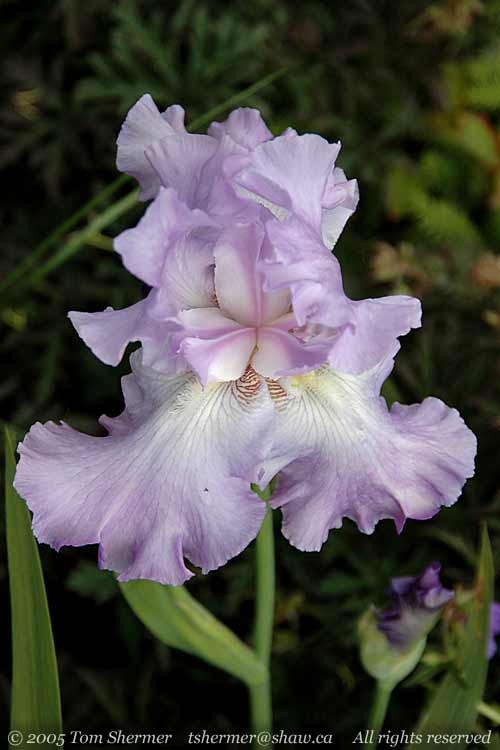 |
| And
this last one is a Spurge (Euphorbia characias). I've shown
one or two in the photojournal before—it's the binary-tree
plant. |
|
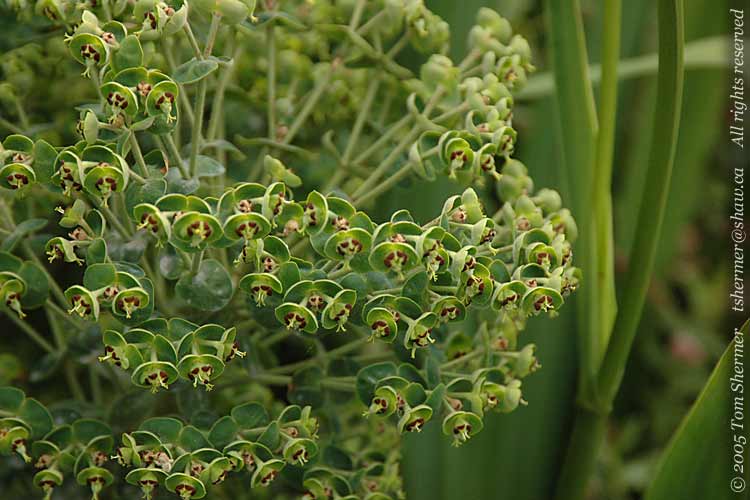 |
|
That's all I got from
the Ambleside stroll; the lens performed okay but the light just
didn't show up.
Next time, it'll be
a whole new month and I'll be playing with yet another new lens.
Bewildered by the flowers,
Tom
|
|
|